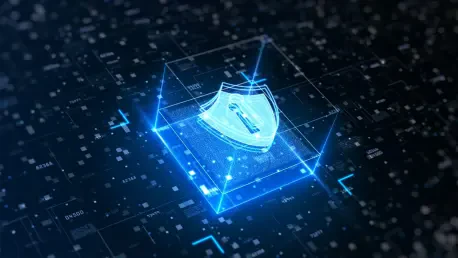In today’s rapidly evolving digital landscape, the threat of cyber attacks has become more sophisticated and pervasive than ever before. Traditional reactive security measures, where actions are only taken after an incident occurs, are constantly proving inadequate against attackers who continue to innovate using automation, artificial intelligence, and social engineering tactics. Reactive security leaves organizations perpetually playing catch-up, which can lead to costly breaches, data loss, reputational damage, and overwhelmed security teams. This constant cycle of firefighting underscores the need for a seismic shift in cybersecurity strategy—from a reactive to a predictive approach.
The Evolution of Cybersecurity
Moving Beyond Reactive Measures
A critical deficiency of reactive security measures lies in their innate limitations. By only responding to attacks after they have happened, organizations are inherently at a disadvantage, always one step behind cybercriminals. This reactive stance results in a never-ending game of cat and mouse, where security teams must continuously defend against an array of evolving threats. The consequences of this approach are far-reaching, often resulting in significant financial loss, data theft, and damaged reputation. As cyber threats grow in sophistication, the need for a proactive strategy becomes increasingly paramount.
Predictive security, in contrast, seeks to anticipate and neutralize threats before they can materialize. By leveraging advanced analytics, big data, and machine learning, organizations can detect patterns and anomalies that signal potential compromise. This shift allows security leaders to stay ahead of attackers, reducing the likelihood of successful breaches and mitigating risks proactively. In the face of an increasingly digital and interconnected world, adopting a predictive security stance is no longer optional but a necessity for survival and resilience.
Harnessing Advanced Technologies
To effectively transition to predictive security, the integration of cutting-edge technologies is indispensable. Advanced analytics and machine learning play a pivotal role in identifying early signs of threats. These technologies can analyze vast amounts of data to discern patterns and anomalies that may signify an impending attack. By continuously monitoring network traffic and user behavior, predictive models can highlight suspicious activities, enabling swift intervention before significant damage occurs.
Another cornerstone of this approach is threat intelligence integration. By continuously analyzing global threat data, organizations can anticipate new tactics and vulnerabilities that attackers might exploit. This proactive stance not only improves response times but also ensures that defenses are continually updated to contend with emerging threats. Proactive risk assessments further bolster this strategy by regularly evaluating systems, processes, and user behaviors to identify vulnerabilities before they are exploited. Through automation and orchestration, security operations can achieve rapid detection, analysis, and response, minimizing human error and expediting threat neutralization.
Strategic Implementation of Predictive Security
Integrating Proactive Risk Assessments
The shift to predictive security requires a profound understanding of an organization’s systems, processes, and user behaviors. Proactive risk assessments are critical in identifying and mitigating weaknesses before they pose a threat. By continuously evaluating these elements, security teams can implement measures to counteract vulnerabilities proactively, ensuring a robust defense against potential attacks. This proactive assessment process, coupled with automation and threat intelligence, forms the backbone of a comprehensive predictive security strategy.
Automation plays an essential role in executing predictive security measures efficiently. Implementing automated tools for threat detection, analysis, and response significantly reduces the reliance on human intervention, which can be prone to errors and slow decision-making. Automation accelerates the response to potential threats, ensuring that even the most advanced cyber attacks can be swiftly neutralized. This combination of proactive risk assessments and automation is crucial in maintaining a resilient defense posture in the face of sophisticated threats.
Necessity of Cross-Functional Collaboration
The successful deployment of predictive security hinges on collaboration across various organizational departments. Security must be viewed as an integral part of every business process, necessitating engagement from stakeholders in IT, operations, and business units. This cross-functional collaboration ensures that security practices are embedded throughout the organization, creating a unified defense strategy. Breaking down departmental silos and encouraging open communication about risks foster an environment where security is a shared responsibility, enhancing the overall efficacy of predictive measures.
Investing in scalable, intelligent platforms is essential for achieving unified visibility across the organization. These platforms facilitate seamless integration of threat intelligence, risk assessments, and automated processes, providing comprehensive insight into potential vulnerabilities and enabling immediate remedial action. Such visibility ensures that security teams can act on real-time data, prioritize risks effectively, and adopt a preventive stance. Redefining success metrics in this context involves tracking the detection and neutralization of threats before escalation, rather than merely responding to incidents after the fact.
Future Considerations and Challenges
Embracing Visionary Leadership
Transitioning to predictive security is not without its challenges. It demands visionary leadership capable of guiding organizations through significant investments in technology and human resources. Security leaders must foster an organizational culture that values continuous learning and adaptation to keep pace with evolving threats. This journey requires bold decision-making, a commitment to change, and a willingness to embrace innovative technologies that can revolutionize cybersecurity practices. Visionary leadership is vital in breaking down barriers, encouraging collaboration, and instilling confidence in stakeholders.
Creating an environment that supports this shift involves redefining traditional approaches to risk management and security analytics. By focusing on predictive measures, organizations can prioritize strategic initiatives over reactive firefighting. This proactive mindset builds stakeholder confidence, demonstrating security as a business enabler rather than a mere protective measure. Leaders who champion this transformation will not only safeguard their organizations but also inspire a new generation of security professionals to think and act proactively.
Investing in Sustained Improvement
Implementing predictive security strategies necessitates continuous investment in technology, personnel, and organizational processes. The integration of advanced analytics, threat intelligence, automation, and collaborative tools represents a significant financial commitment. However, the long-term benefits of preventing costly breaches, safeguarding sensitive data, and maintaining organizational reputation far outweigh the initial expenditure. By fostering a culture of sustained improvement, organizations can adapt to emerging threats and remain resilient in the face of evolving cyber risks.
Encouraging ongoing education and training for security personnel is paramount in this context. As predictive security technologies evolve, so too must the expertise of those tasked with implementing and managing these systems. Investing in professional development ensures that security teams are equipped with the latest knowledge and skills, enabling them to leverage new tools and methodologies effectively. This emphasis on continuous learning and adaptation is crucial in maintaining a robust security posture that can anticipate and counteract sophisticated cyber threats.
Strategic Roadmap for Predictive Security
Prioritizing Preventive Action
Organizations aiming to implement predictive security must develop a strategic roadmap that prioritizes preventive actions over reactive responses. This involves setting clear objectives for threat detection, risk management, and incident prevention, which are aligned with business goals and regulatory requirements. By adopting a preventive approach, security leaders can ensure that defenses are robust and capable of countering emerging threats. This alignment between security measures and overall business strategy is essential in achieving a cohesive and effective defense posture.
Creating a roadmap involves identifying key milestones and metrics to track progress effectively. Leaders should focus on measuring the detection and neutralization of threats before escalation, rather than solely responding to incidents after they occur. This proactive mindset demonstrates a commitment to safeguarding the organization, building stakeholder confidence, and establishing security as a vital component of business success. By setting clear milestones and continuously evaluating progress, organizations can adapt their strategies to address emerging risks and maintain resilience.
Encouraging Innovation and Collaboration
A fundamental aspect of predictive security is fostering a culture of innovation and collaboration. Security teams must be encouraged to explore new technologies and methodologies that can enhance threat detection and prevention capabilities. Collaboration across departments and with external partners is crucial in identifying potential vulnerabilities and implementing effective countermeasures. By embracing innovation and fostering collaboration, organizations can leverage a diverse range of expertise and perspectives to fortify their defenses.
This culture of innovation should extend to the broader cybersecurity community, where sharing insights and best practices can lead to collective improvements in security measures. Encouraging open dialogue and collaboration among industry peers helps to identify emerging threats and develop innovative solutions. By fostering a collaborative environment, organizations can stay ahead of attackers, continuously improving their predictive security strategies and maintaining a robust defense posture.
A New Era of Cyber Defense
Setting a Standard for Resilience
The transition to predictive security represents a new era in cyber defense, setting a standard for resilience and trust in the digital age. Organizations that successfully implement predictive strategies can significantly reduce the frequency and impact of cyber incidents, safeguarding sensitive data and maintaining business continuity. Security leaders who champion this transformation demonstrate visionary leadership, ensuring their organizations are well-equipped to counteract evolving threats and inspire confidence among stakeholders.
This shift requires a readiness to embrace change, invest in advanced technologies, and foster a culture of continuous improvement. Security professionals must be encouraged to think and act proactively, leveraging real-time data and innovative methodologies to anticipate and neutralize threats. By setting a standard for resilience, predictive security empowers organizations to stay ahead of attackers, reducing the likelihood of successful breaches and fortifying defenses. This proactive approach not only enhances security measures but also positions organizations as leaders in the digital age.
Empowering Future Security Professionals
In today’s fast-paced digital world, cyber threats have grown increasingly sophisticated and widespread. Traditional reactive security measures—where responses only occur after an incident has happened—are proving to be insufficient against ever-evolving attacks. Cybercriminals are continually advancing their techniques, employing automation, artificial intelligence, and social engineering to outmaneuver defenses. Reactive security forces organizations into a perpetual state of catch-up, with repercussions including costly data breaches, significant loss of information, damaged reputations, and security teams under immense pressure. This endless cycle of reactive firefighting signals a critical need for a fundamental change in cybersecurity strategies. It highlights the importance of shifting from a reactive approach to a predictive one. Predictive cybersecurity anticipates threats before they strike, enabling proactive measures to be taken. By leveraging advanced technologies and data analytics, a predictive approach aims to foresee potential vulnerabilities and mitigate risks before they materialize into full-blown incidents.









